
Roots
Feel the quiet murmur in each curl, the gentle sway in every coil; sense the memory held within a strand. For those of us with hair that tells stories through its spirals and zigzags, the connection to ancestral practices stretches far beyond mere adornment. It holds a wisdom, passed down through generations, a profound understanding of life’s rhythms, of the body, and of the sacred. This journey into what traditional African hair practices unveil for our contemporary grasp of hair health and heritage begins, truly, at the source—the very biology and foundational understanding of our unique textures, viewed through the enduring lens of our past.
The very structure of hair born of African lineage possesses a distinct architecture. Unlike straighter hair types that often possess a more circular follicle, textured hair emerges from an elliptical follicle, creating the beautiful, often tightly wound coil. This shape contributes to its strength, but also to its characteristic dryness, as natural oils find it more challenging to travel down the winding shaft. Ancestral peoples, long before the advent of microscopes or molecular biology, held an intuitive, practiced knowledge of this fundamental reality.
Their methods, honed over millennia, spoke to this innate need for moisture and protection. They observed how the sun’s direct gaze, the dry winds of the savanna, or the humid breath of the rainforest impacted each strand. Such careful observations form the very first layer of understanding within the textured hair heritage —a knowledge born of living intimately with the environment and the body.

Hair Anatomy Ancestrally Understood
The intricate micro-anatomy of a hair strand, with its medulla, cortex, and cuticle layers, might seem a modern scientific revelation. Yet, consider the ways traditional African practitioners handled hair. The emphasis on gentle manipulation, the application of rich, emollient plant butters, or the meticulous braiding patterns speak to an unspoken understanding of the cuticle’s role in moisture retention and protection.
They knew, through centuries of practice, that rough handling led to breakage, and that certain oils sealed in vitality, preserving the hair’s outermost shield. The resilience of these practices, enduring through the ages, testifies to an inherent grasp of what the hair’s internal structure demanded for its well-being.
Traditional African hair care practices, developed over millennia, intuitively addressed the unique structural needs of textured hair, long before scientific validation.
From the Adinkra symbol Duafe, the wooden comb of beauty and hygiene, we glean a sense of purpose beyond simple detangling. Such combs, crafted with wide teeth, were designed to move through dense, coily hair with minimal friction, a testament to an awareness of hair’s delicate nature. This deep cultural understanding extended to the hair’s elasticity and porosity, even if not termed so in scientific terms. When hair was stretched for styling or treated with specific ingredients, its response was noted, its ability to hold a style or absorb a balm became part of a collective, inherited wisdom.
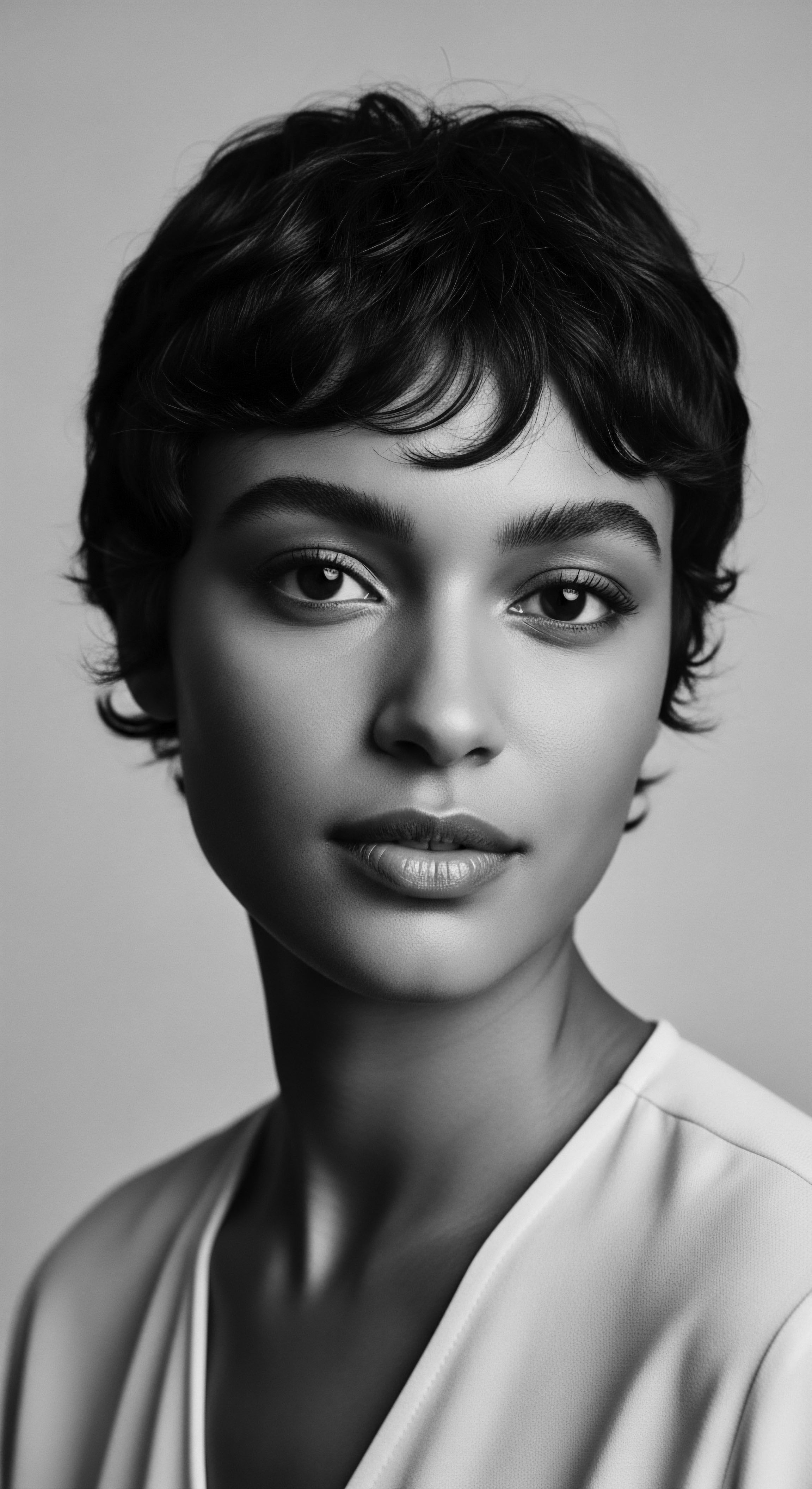
Hair’s Place in Heritage Lexicons
Modern hair classification systems, while offering a framework for discussion, often fall short of capturing the true breadth of textured hair’s diversity. Historically, communities across Africa did not rely on numerical scales. Their classification was interwoven with daily life, with the hair’s responsiveness to care, and its cultural significance.
Hair might be described by its appearance and feel ❉ “as Soft as Lamb’s Wool,” “strong Like a Coiled Spring,” or “like the Morning Mist,” reflecting specific textures and their needs. The names of hairstyles themselves often conveyed their function or symbolism, providing a living lexicon of hair heritage .
The language surrounding hair was not merely descriptive; it was often imbued with spiritual and social weight. Hair was a conduit, a antenna connecting the individual to the divine, to ancestors, and to community. A phrase like “nhyiamu” might describe the gathering of hair into a specific style, but also the gathering of people, linking hair practices to social cohesion. The very act of caring for hair was a language of affection, of teaching, of belonging.
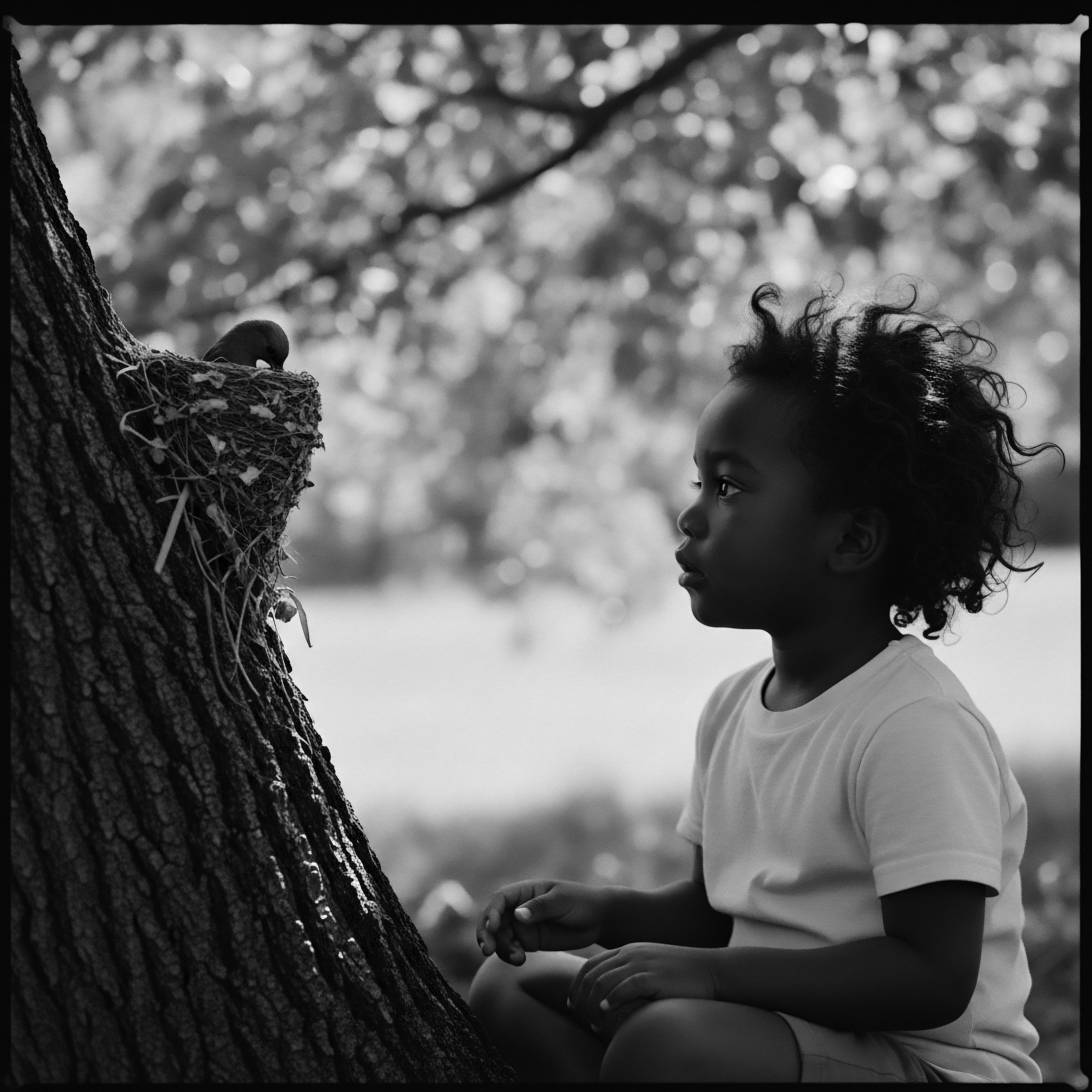
Ancestral Influences on Hair Cycles
The rhythm of hair growth, its cycles of anagen, catagen, and telogen, are biological constants. Yet, the vibrancy and robustness of hair throughout these cycles can be deeply impacted by internal factors. Traditional African societies understood this connection between inner vitality and outer appearance. Diet played a significant, if unstated, role in hair health.
Foods rich in essential fatty acids, vitamins, and minerals—like various nuts, seeds, leafy greens, and lean proteins—were staples across many regions. These dietary patterns, passed down through generations, directly nourished the hair follicle, supporting strong growth and minimizing shedding.
Consider the use of Moringa oleifera , indigenous to parts of Africa. Its leaves, consumed widely, are a powerful source of vitamins A, C, and E, as well as minerals crucial for hair vitality. Modern nutritional science now validates these ancestral dietary choices, showing how a lack of certain nutrients can disrupt the hair growth cycle, leading to thinning or breakage.
Traditional understanding of hair’s health was, therefore, inextricably linked to the holistic health of the individual within their environment (Olatunji, 2018). This interwoven knowledge of environmental, dietary, and physical well-being forms a critical component of our textured hair heritage .
Beyond nutrition, communal practices and spiritual well-being also factored into hair’s health. Low stress, strong community bonds, and spiritual connection were, for many cultures, considered cornerstones of a balanced life. Such a life, it was intuitively understood, allowed the body to function optimally, reflected in the vitality of one’s hair and skin. A compelling illustration of the depth of this holistic understanding comes from the practices of the Himba people of Namibia.
The women apply a paste of ochre, butterfat, and aromatic resin to their hair, known as ‘otjize.’ This practice, while aesthetically striking, also acts as a natural sunscreen, insect repellent, and moisturizer for both hair and skin in the harsh desert environment (Crittenden, 2011). This isn’t just about beauty; it is an integrated system of sun protection, hygiene, and cultural identity that speaks to a deep, practical knowledge of maintaining hair and body health within specific environmental conditions. The longevity and vibrancy of their hair, even in such challenging conditions, stands as a testament to the efficacy of these ancestral, context-specific practices.
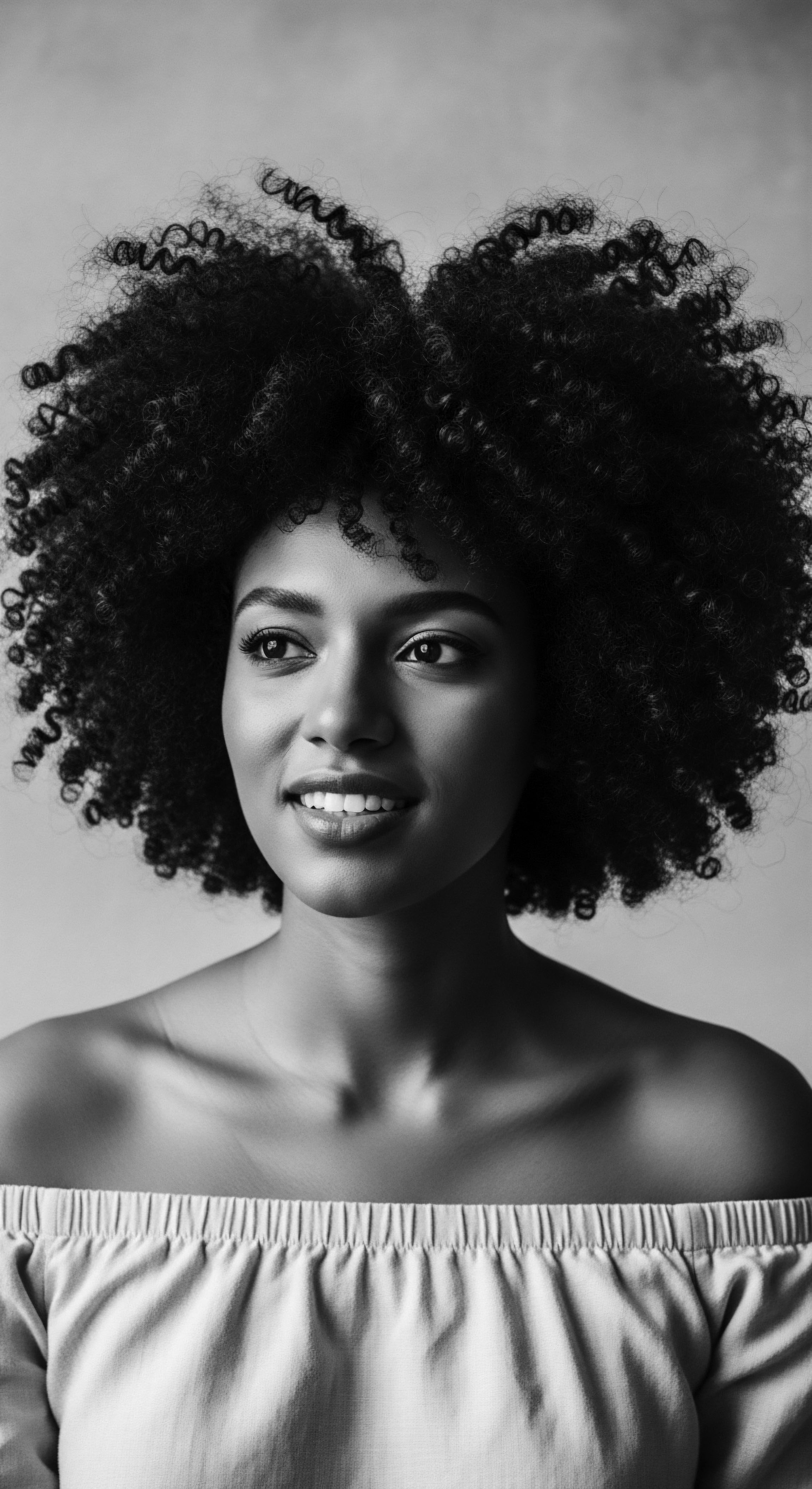
Ritual
The hands that shaped the hair were often hands of community, of kinship, of wisdom passed across generations. The practices themselves were more than just styling sessions; they were rituals of connection, of transformation, of identity. These were the moments when techniques were refined, tools became extensions of thought, and hair became a canvas for storytelling. The intricate artistry and deliberate science behind traditional African hair styling, often dismissed by colonial gazes as mere ‘folklore,’ actually hold sophisticated principles that modern understanding of hair care now affirms, firmly grounding our present practices in a rich, vibrant heritage .

Protective Styling Ancestry
Many of the ‘new’ protective styles seen today—braids, twists, cornrows—are, in fact, ancient techniques, their origins stretching back thousands of years across the African continent. These styles were not solely for aesthetic appeal; they served a vital functional purpose ❉ to shield the hair and scalp from environmental stressors like dust, sun, and breakage. By keeping the hair bundled and contained, these methods minimized tangling and mechanical damage, allowing hair to retain length and moisture.
Archaeological findings, such as hair artifacts from ancient Egypt, show complex braiding and weaving techniques that align with modern protective styling principles (Fletcher, 2015). This continuity across millennia highlights a consistent, practical wisdom regarding hair longevity.
- Cornrows ❉ Originating perhaps as early as 3000 BCE in various African cultures, cornrows were often used to depict social status, religious beliefs, or marital status. Functionally, they protected the scalp and allowed for significant hair growth by keeping strands neatly tucked away.
- Bantu Knots ❉ Traced to the Zulu people of Southern Africa, these coiled knots serve as a setting technique that defines curls and protects ends. Their method of creation inherently minimizes manipulation once set.
- Box Braids and Twists ❉ While often a canvas for elaborate adornment, these methods section hair into individual units, minimizing friction and allowing for easy moisture application to the scalp, preserving its health.
The underlying principle across these diverse styles was to reduce daily manipulation, allowing hair to rest and retain its natural oils. This is precisely what contemporary hair science promotes for minimizing breakage in highly textured hair, a testament to the enduring practicality of these ancestral styling concepts.
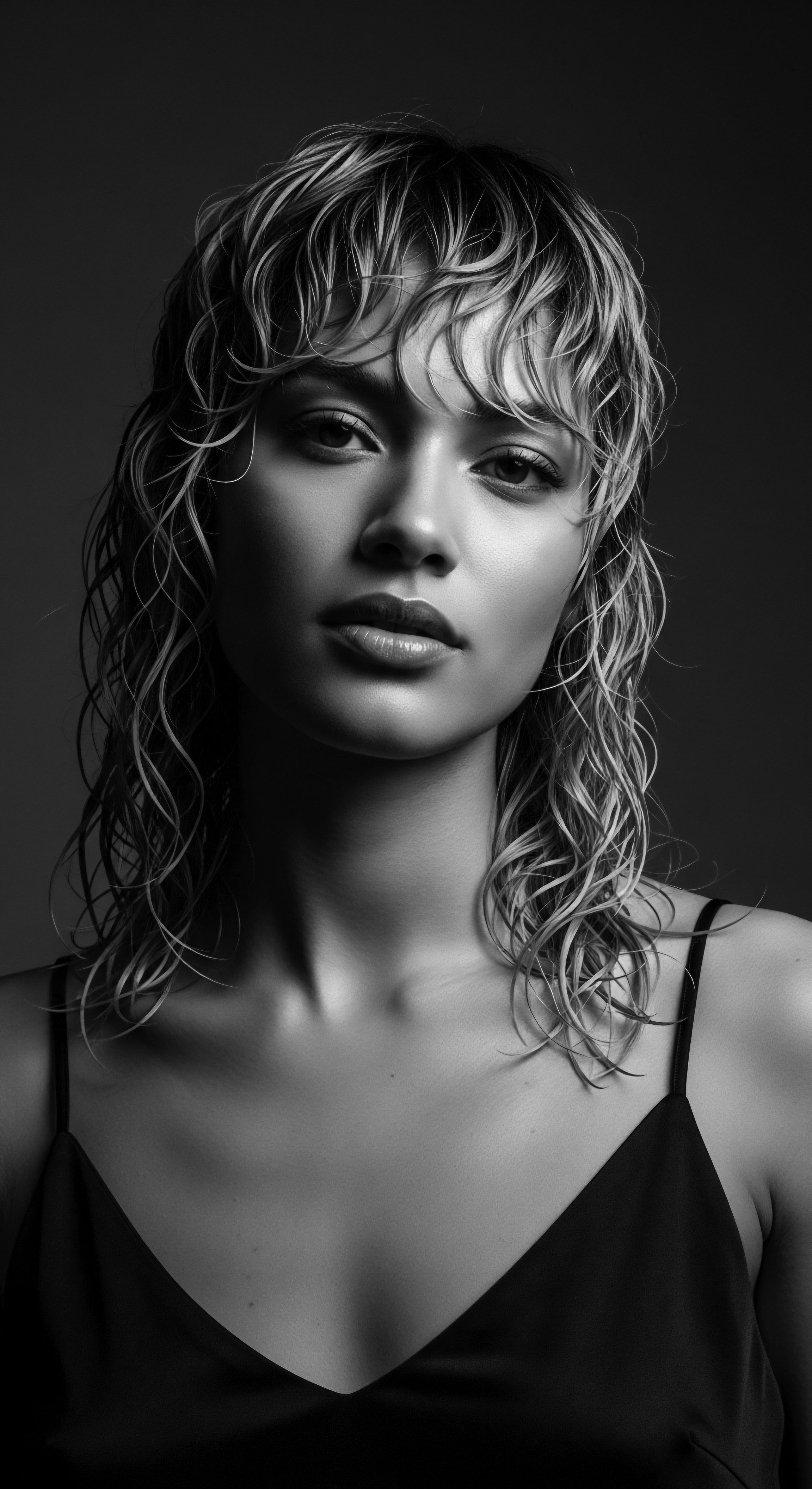
Natural Styling and Defining Hair’s Heritage
Before the vast array of modern products, African communities relied on the gifts of the earth to define, soften, and enhance their hair’s natural textures. Water was, and remains, a fundamental element. Used with purpose, it helped to group curls and coils. Beyond water, plant-based gels, often derived from roots or seeds, provided hold and definition.
Consider the mucilage from the okra plant , or certain types of aloes, which offered a natural slip and clumping effect for curls, much like modern-day curl definers. These traditional applications were a gentle art, respecting the hair’s inherent structure rather than attempting to force it into an unnatural state. The knowledge of which plants yielded the best results for particular textures or desired outcomes was part of the oral tradition, passed from elder to apprentice, mother to child, ensuring the survival of this particular hair heritage .

Historical Role of Wigs and Hair Extensions
Wigs and hair extensions are not a contemporary invention. Their history in Africa is ancient, deeply interwoven with status, ritual, and aesthetic expression. In ancient Egypt, elaborate wigs crafted from human hair, plant fibers, or wool were symbols of wealth, status, and protection from the sun. They were often meticulously styled and perfumed.
The use of extensions was also prevalent in other African societies, where additional hair might be woven into natural strands to create impressive, voluminous styles for ceremonies, rites of passage, or as a display of artistic skill. These practices demonstrate a long-standing understanding of hair as a mutable, adaptable aspect of identity and adornment, capable of profound transformation.
The historical use of wigs and extensions in African societies underlines a sophisticated, long-standing understanding of hair as a canvas for identity, status, and artistic expression.
Today’s hair extension industry echoes these ancient impulses. While the materials and scale have changed, the fundamental desires—for length, volume, versatility, or simply a new look—remain connected to this deep, shared past. This continuity speaks to the timeless human desire for self-expression through hair.

Traditional Thermal Applications and Modern Parallels
While extensive heat styling as we know it today (flat irons, curling wands) is a modern phenomenon, some traditional African practices involved forms of heat. For instance, the use of warmed combs or stones to smooth hair for certain ceremonial styles can be traced in various cultures. These methods were applied with great care and often accompanied by protective emollients to prevent damage. The knowledge of precise temperature and the use of rich, softening agents were crucial, reflecting an understanding that excessive heat would compromise the hair’s integrity.
| Traditional Tool/Method Wooden/Bone Combs |
| Ancestral Purpose/Link to Health Gentle detangling, scalp stimulation, oil distribution. Avoided snagging fragile strands. |
| Modern Parallel/Scientific Understanding Wide-tooth combs, seamless detanglers. Minimizes mechanical damage, preserves cuticle. |
| Traditional Tool/Method Plant Fibers/Twine |
| Ancestral Purpose/Link to Health Used for braiding, weaving, and creating extensions; secure styles. |
| Modern Parallel/Scientific Understanding Synthetic/human hair extensions. Allows for protective styling, length. |
| Traditional Tool/Method Warmed Stones/Combs |
| Ancestral Purpose/Link to Health Temporary smoothing for ceremonial styles, applied with oils. Minimal, controlled heat. |
| Modern Parallel/Scientific Understanding Flat irons/hot combs. Requires heat protectants, emphasizes careful temperature control to avoid protein denaturation. |
| Traditional Tool/Method Natural Plant Gels |
| Ancestral Purpose/Link to Health Hold, definition, moisture retention (e.g. okra mucilage). |
| Modern Parallel/Scientific Understanding Modern curl gels/custards with humectants and film-formers. Provides hold and moisture. |
| Traditional Tool/Method The ingenuity of ancestral tools directly informed the development of modern hair care implements, always with the goal of nurturing textured hair. |
Modern thermal reconditioning, with its high temperatures and chemical applications, carries significantly higher risks of irreversible damage if not approached with caution. The ancestral cautionary approach to heat reminds us of the delicate balance required to preserve the hair’s protein structure. The lessons embedded in this hair heritage speak to mindful application and the prioritizing of hair’s long-term well-being over immediate, dramatic alterations.
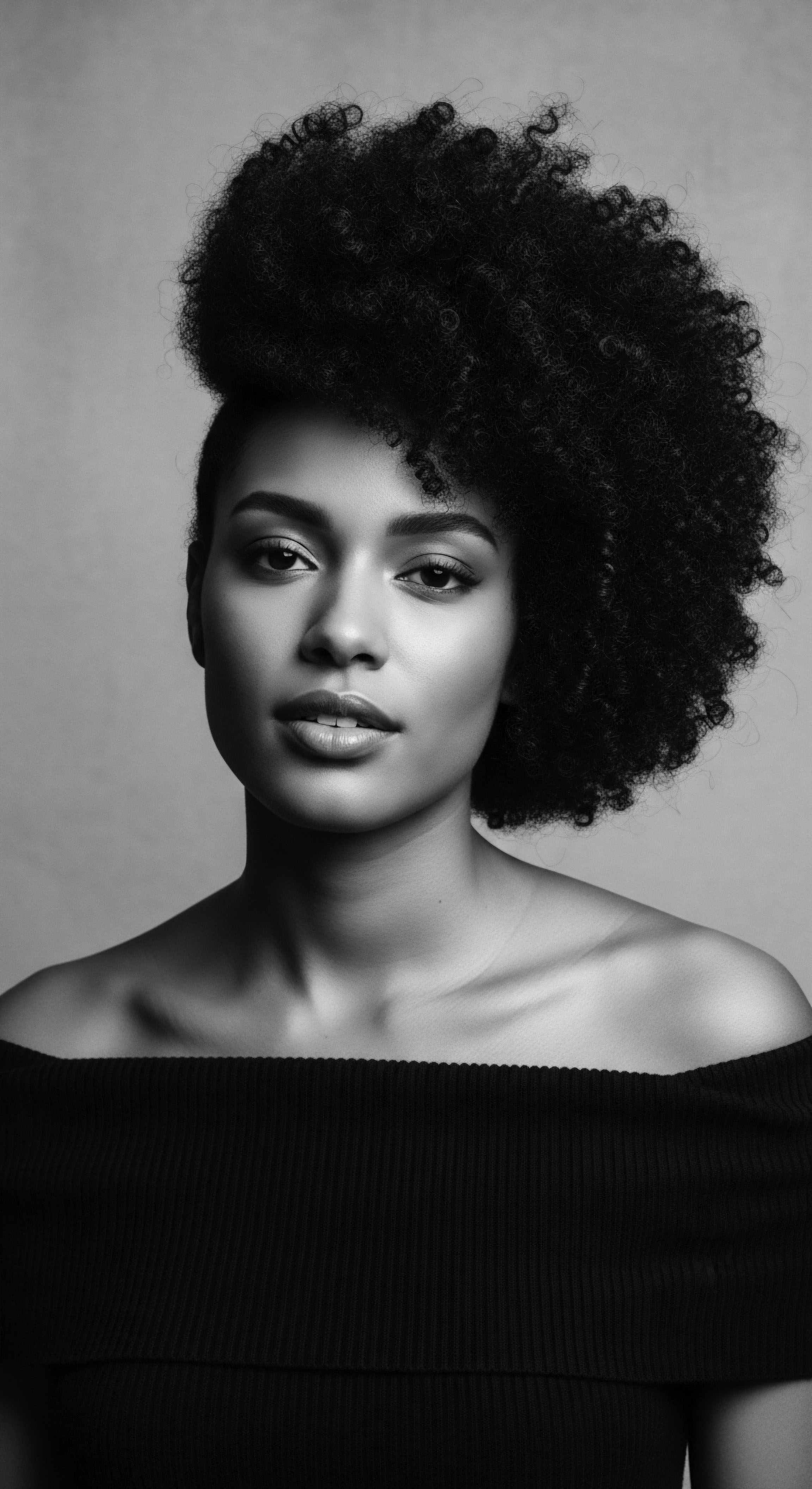
Relay
The journey of hair care, from the ancient communal rituals to the solitary moments of modern self-care, represents a vibrant, continuous relay of knowledge. This transmission of wisdom, deeply rooted in ancestral practices , offers not merely techniques but a philosophy of holistic well-being. It is here, in the daily and nightly acts of tenderness, that the traditional African approach truly speaks to our contemporary pursuit of hair health, urging us to consider not just the strand, but the whole being that carries it. The insights gained from past generations provide a blueprint, a guiding light for navigating the complexities of textured hair today, elevating routine to ritual, and challenge to opportunity.

Personalized Regimens from Ancestral Wisdom
The concept of a personalized hair regimen, often touted as a modern advancement, finds deep resonance in ancestral practices. Traditional African hair care was never a one-size-fits-all approach. Rather, it was inherently tailored. The specific plants available in a region, the climate’s influence, an individual’s age, life stage, or even social status, all dictated the methods and ingredients employed.
An elder’s hair, thinner with age, might receive gentler cleansing and richer emollients than the vibrant, robust hair of a youth. A child’s hair, still forming, would be treated with protective styles and soft, nourishing balms. This intuitive customization, born from close observation and inherited wisdom, aligns precisely with modern dermatological advice advocating for regimens specific to individual hair porosity, density, and environmental exposures.
This deep understanding of individual needs within the context of communal practices meant that hair care was an adaptive art, ever responsive to the nuances of life. It celebrated the diversity of textures within a community and sought to nurture each unique head of hair. This aspect of heritage reminds us to listen to our hair, to observe its reactions, and to adjust our care accordingly, rather than blindly following generic advice.

The Nighttime Sanctuary ❉ Bonnet Wisdom Through Time
The notion of protecting hair during sleep is far from a new discovery. For centuries, across various African cultures, head coverings, wraps, and specific sleeping arrangements were integral to preserving hairstyles and maintaining hair health overnight. These were not merely fashion statements; they were essential tools in the preservation of intricate styles and the protection of vulnerable strands.
The use of natural fibers like cotton or silk for wraps, though not always labeled as such, intuitively provided a smooth surface that reduced friction, prevented moisture loss, and kept dust and debris from settling on the hair. The modern satin or silk bonnet, a ubiquitous item in the textured hair community today, is a direct, practical continuation of this ancient practice.
Modern satin bonnets and wraps represent a direct continuation of ancestral nighttime hair protection, reflecting a timeless wisdom for preserving hair health.
This nightly ritual speaks to a deep, practical understanding of hair’s fragility. Leaving hair exposed to rough bedding fabrics can lead to tangling, breakage, and loss of moisture. The ancestral wisdom of the nighttime covering served as a silent guardian, ensuring that the day’s styling efforts were not undone and that the hair remained moisturized and protected, ready for the next day. It speaks to a forethought and preventative care that many modern routines now seek to emulate.
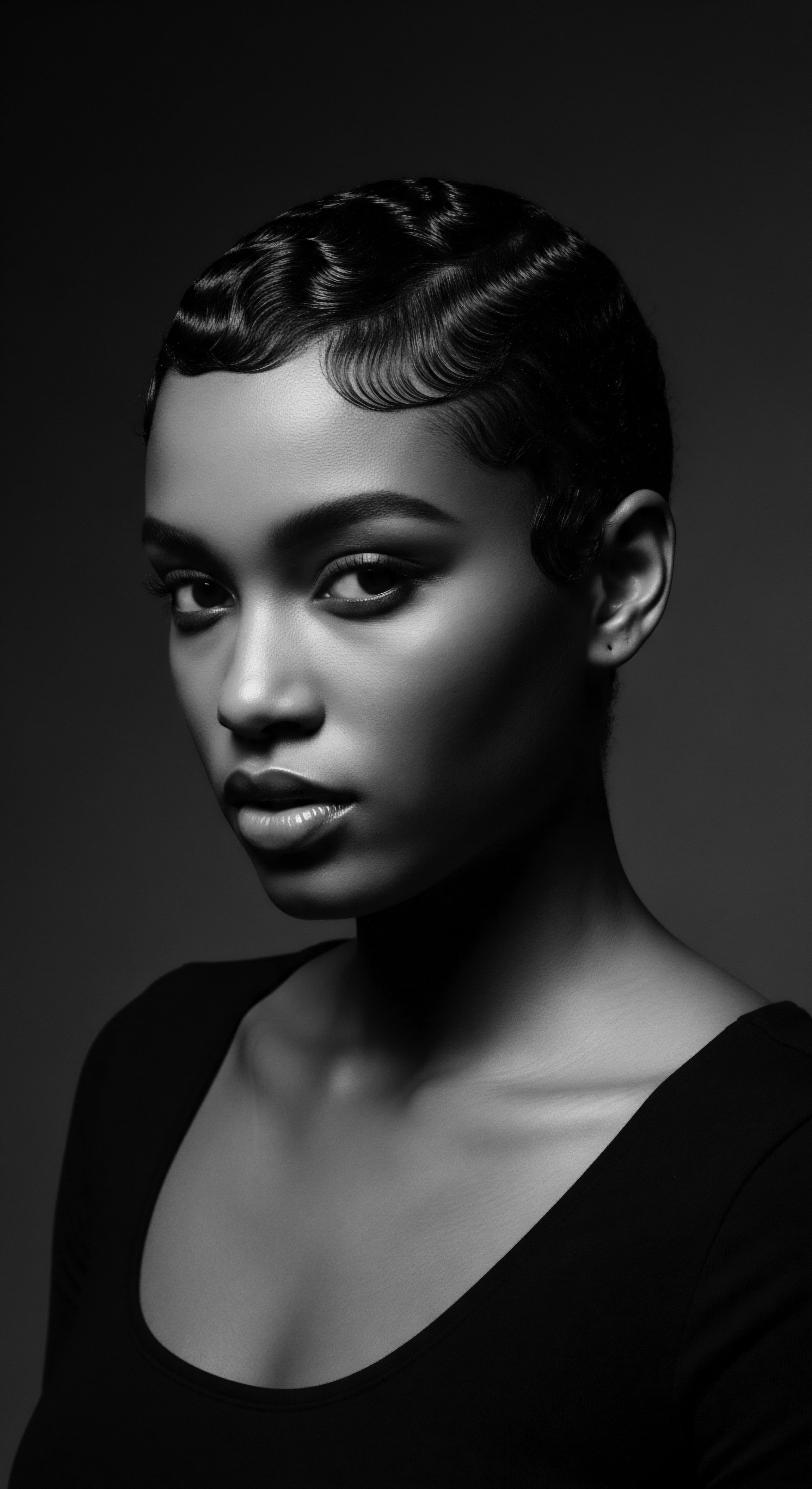
Ingredient Deep Dives for Textured Hair Needs
The African continent is a veritable pharmacopoeia of natural ingredients used for hair care, passed down through oral traditions and practical application. Many of these ingredients, once known only within specific communities, have gained global recognition as modern science confirms their efficacy. Consider some of these powerful gifts from the earth:
- Shea Butter (Butyrospermum parkii) ❉ Derived from the nuts of the African shea tree, this rich butter has been a staple for centuries. Modern science affirms its high concentration of fatty acids (oleic, stearic) and vitamins A, E, and F, making it an exceptional emollient, sealant, and anti-inflammatory agent for the scalp (Maranz, 2008). Its traditional use for softening hair, sealing in moisture, and soothing scalp irritation directly correlates with its scientifically verified properties.
- Baobab Oil (Adansonia digitata) ❉ Pressed from the seeds of the iconic baobab tree, this oil is a lightweight yet potent moisturizer. Its balanced fatty acid profile, including omega-3, -6, and -9, makes it ideal for nourishing hair without heavy residue. Ancestral communities used it for hair elasticity and shine, a property now linked to its ability to deeply penetrate the hair shaft.
- African Black Soap (Ose Dudu) ❉ Originating from West Africa, this natural cleanser, made from plantain skins, cocoa pods, and palm oil, has been traditionally used for both skin and hair. Its gentle yet effective cleansing action, often accompanied by clarifying properties, prepared the hair and scalp for subsequent treatments. Its ability to cleanse without stripping aligns with modern sulfate-free shampoo principles.
- Aloe Vera (Aloe barbadensis miller) ❉ Widely used across many African cultures, the gel from the aloe plant was applied to soothe itchy scalps, promote growth, and moisturize. Its enzymes and polysaccharides are now known for their anti-inflammatory, hydrating, and hair-conditioning properties, echoing ancestral uses.
The wisdom embedded in the selective and purposeful use of these ingredients underscores a sophisticated understanding of their properties, long before chemical analysis. This is not anecdotal evidence; it is a profound body of practical knowledge, rigorously tested and refined over countless generations, forming a tangible part of our hair heritage .

Problem-Solving with Ancestral Wisdom
From dryness and breakage to scalp irritation, the challenges faced by textured hair today are not new. Ancestral communities developed sophisticated, often localized, solutions. For a dry scalp, heated oils infused with herbs might be massaged in. For breakage, protective styling and careful detangling with specific tools were paramount.
These solutions were not about quick fixes; they were about sustained care, connection to natural remedies, and the nurturing of the hair over time. The communal aspect of hair care meant that knowledge about remedies and solutions was shared, adapted, and refined, creating a collective problem-solving network that transcended individual experience.
This enduring practice of seeking natural solutions and emphasizing preventative care stands as a powerful reminder for modern problem-solving. Instead of reaching for harsh chemicals, ancestral wisdom guides us toward gentle, nourishing approaches that respect the hair’s natural composition and promote its inherent strength from within.

Holistic Influences on Hair Health from African Philosophies
In many traditional African worldviews, the individual is inextricably linked to the community, to nature, and to the spiritual realm. Hair, as a prominent and visible aspect of the self, was often viewed as a conduit for this connection. Hair care, therefore, was not merely a physical act but a holistic practice that touched upon spiritual, social, and emotional well-being.
A well-cared-for head of hair reflected inner harmony and a respectful connection to one’s lineage and community. This philosophical approach contrasts sharply with a purely cosmetic view of hair.
The emphasis on ritual, on community gatherings for braiding sessions, on the careful selection of ingredients from the earth, all reinforce this holistic perspective. It suggests that true hair health radiates from a place of inner peace, physical nourishment, and a strong sense of belonging. This rich philosophical heritage encourages us to see our hair not as an isolated entity, but as an extension of our entire being, deserving of reverence and mindful care.

Reflection
The story of textured hair is, at its profoundest core, a living archive—a repository of strength, beauty, and resilience. As we navigate the contemporary landscapes of hair care, the ancestral echoes from African traditions do not simply whisper from the past; they resonate with a vibrant clarity in the present. The intuitive wisdom of those who first understood the coiled helix, the protective embrace of a braid, the nourishing touch of a natural balm, continues to inform, to validate, and to elevate our understanding of hair health. This is a knowledge that has weathered migrations, survived cultural shifts, and endured the erasure of history, only to re-emerge, luminous and vital, in the hands and hearts of generations reclaiming their heritage .
Every decision we make about our hair today, from the ingredients we choose to the styles we wear, carries within it a lineage. It is a dialogue between the elemental biology of the strand and the inherited practices of care, a conversation that crosses centuries. The ‘Soul of a Strand,’ then, reveals itself not as a static historical artifact, but as a living, breathing testament to ingenuity, adaptation, and an enduring connection to self and ancestry. Our appreciation for textured hair today grows deeper, more rooted, when we recognize it as a continuum, where ancient wisdom and modern science converge to celebrate a timeless legacy of beauty, strength, and unapologetic identity.
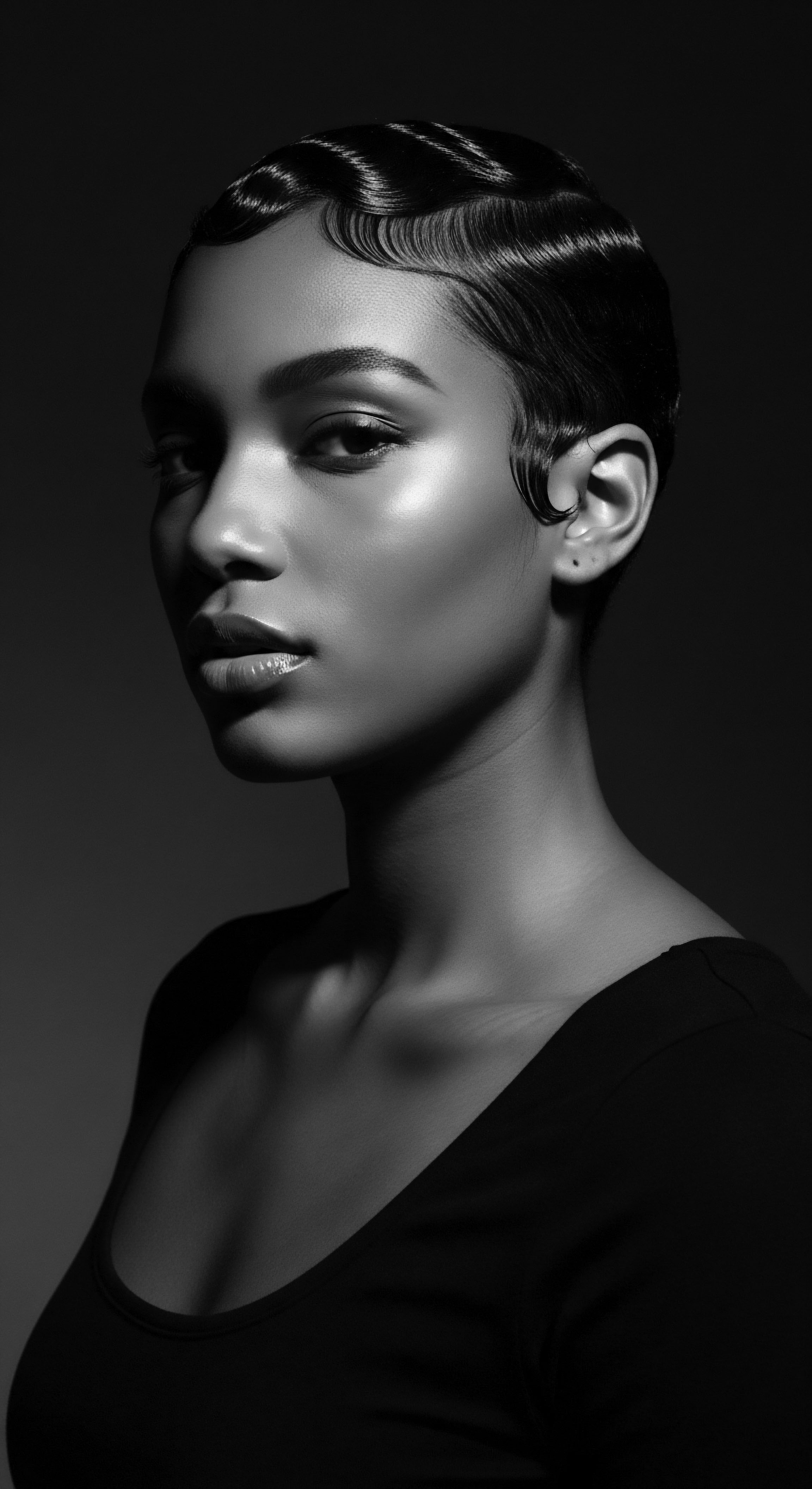
References
- Crittenden, A. N. (2011). The ecology of human hair ❉ The Himba of Namibia as a case study. In J. L. Schroeder (Ed.), Evolutionary Perspectives on Human Hair ❉ From Primates to People (pp. 209-224). Springer.
- Fletcher, J. (2015). Ancient Egyptian Hair and Hairdressing. Taylor & Francis.
- Maranz, S. (2008). The African Shea Butter Tree. CABI.
- Olatunji, T. O. (2018). African Indigenous Knowledge Systems and the Sustainable Management of Natural Resources. Springer.
- Thompson, C. (2009). Hair Story ❉ Untangling the Roots of Black Hair in America. St. Martin’s Press.
